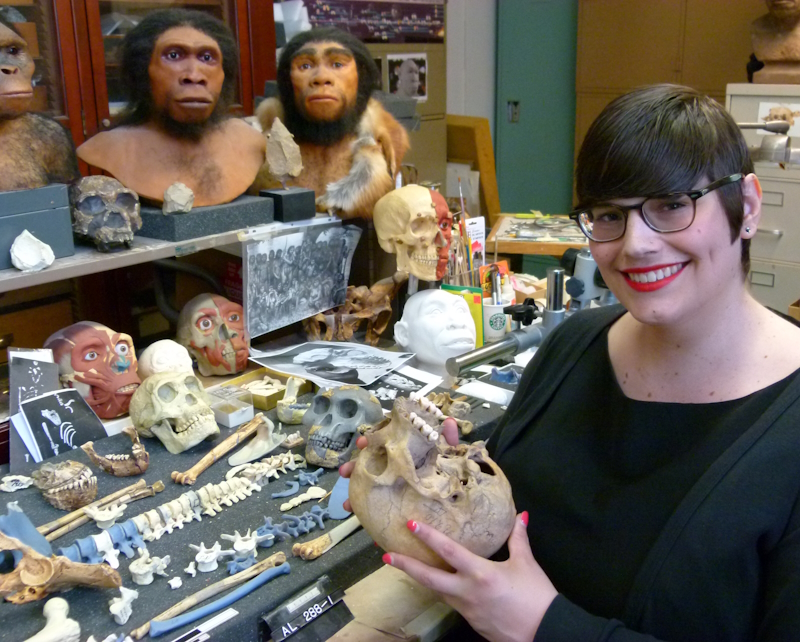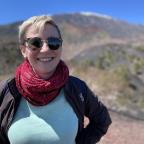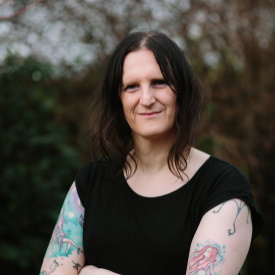Claudia Astorino (she/her, they/them) discusses how her intersex identity motivated her to explore intersex variation through the lens of evolutionary biology.

Growing up, it's not uncommon for individuals to be unaware that they are intersex, often receiving only fragments of the truth about their bodies. My own experience was no different. At the age of eight, I was told that I was born without a uterus. It wasn’t until I turned 14 that I learned the reason why I didn’t have a uterus: I was intersex. That revelation was life-altering. Being told I was something that I didn't even think existed was mind-blowing.
Being intersex came with a heavy burden of stigma and shame. As an intersex child, you're often instructed to keep your identity a secret. I was told not to share it with anyone, and for a long time, I believed I could never be open about being intersex. Intersex is still typically conceived of as medical condition that needs to be fixed, resulting in interventions which are often medically unnecessary and sometimes lead to life-long health implications. It was very isolating going through this alone as this was a time when very few people were out as intersex – I never knew if I would ever meet another person like me.
My identity shaped my career decisions
Knowing I was different from a young age led me to pay extra attention in science classes, particularly biology. I distinctly remember a lesson on Punnett squares and genetics, where I thought that if I could grasp the science behind these concepts, I might be able to understand why I was different. When I majored in biology at university, it became clear how pervasive the concept of binary sex was in biology. In university and graduate school, I realised that this binary system didn’t acknowledge my existence despite my presence in the many classrooms where I was considered an outlier, an exception to the rule of binary sex. It struck me that the very foundation of how we think about people and bodies in biology is based on principles that are, at best, non-inclusive and, at worst, wilfully ignorant of anyone who cannot be easily shoehorned into male or female categories.
As an intersex scientist, I am interested in challenging the rigid frameworks that dismissed me and others like me. I think that growing up with the awareness that bodies are more diverse than is widely acknowledged enabled me to think critically and challenge deeply held assumptions from a biological and evolutionary perspective. I’m currently a PhD candidate in biological anthropology and am excited for future research on these topics.
Discussing intersex in a scientific context gave me confidence
During grad school, I have focused on studying skeletal morphology, including skull traits that exhibit sex variation between typical males and females. I am also incredibly interested in how these skeletal sex traits are expressed in people with different forms of intersex. I would like to explore intersex skeletal variation, in general, and understand intersex from an evolutionary biology perspective. Initially, I feared that pursuing these topics might jeopardise my academic future, especially since I felt that I had to keep my intersex identity separate from my professional life. After I came out, however, I was overwhelmingly supported by my colleagues and the field. In 2017, I was first invited to talk about intersex at a symposium exploring how diverse perspectives inform scientific research. I decided to discuss intersex in a scientific context for the first time, highlighting its importance from both scientific and evolutionary standpoints. The response was overwhelmingly positive, and this experience gave me the confidence to consider research in this area.
Now, I’m in the process of writing my dissertation; when I’m finished, I’m looking forward to delving into intriguing questions about sex variation. As a biological anthropologist, studying skeletal and fossil remains is fascinating, and the idea that my work might contribute to our understanding of intersex biology is incredibly rewarding.
I found purpose and clarity in my work
I often wonder what it would have been like if I had learned in high school that sex is not a rigid, binary concept. Understanding that sex diversity, including intersex, exists across many species demonstrates that intersex individuals are simply part of the natural variation in many forms of life. This perspective allows us to challenge the limitations of strictly categorising people as male or female. As I explore this field, I feel grateful that my research not only expands scientific knowledge but also may help others to better understand intersex people. I’m so happy to be able to be myself in a professional context, and am proud that my work contributes to a more inclusive understanding of what it means to be human.










